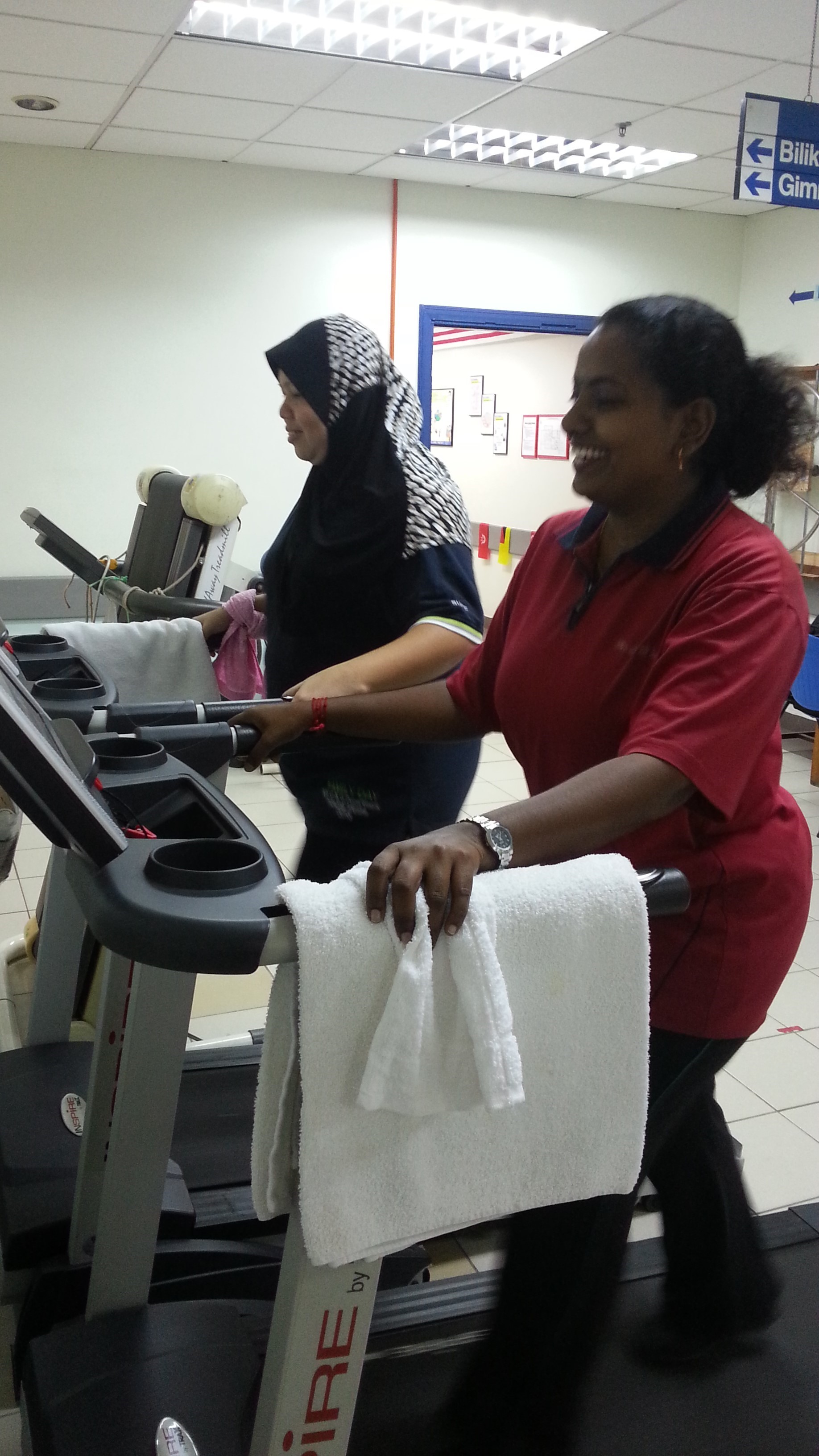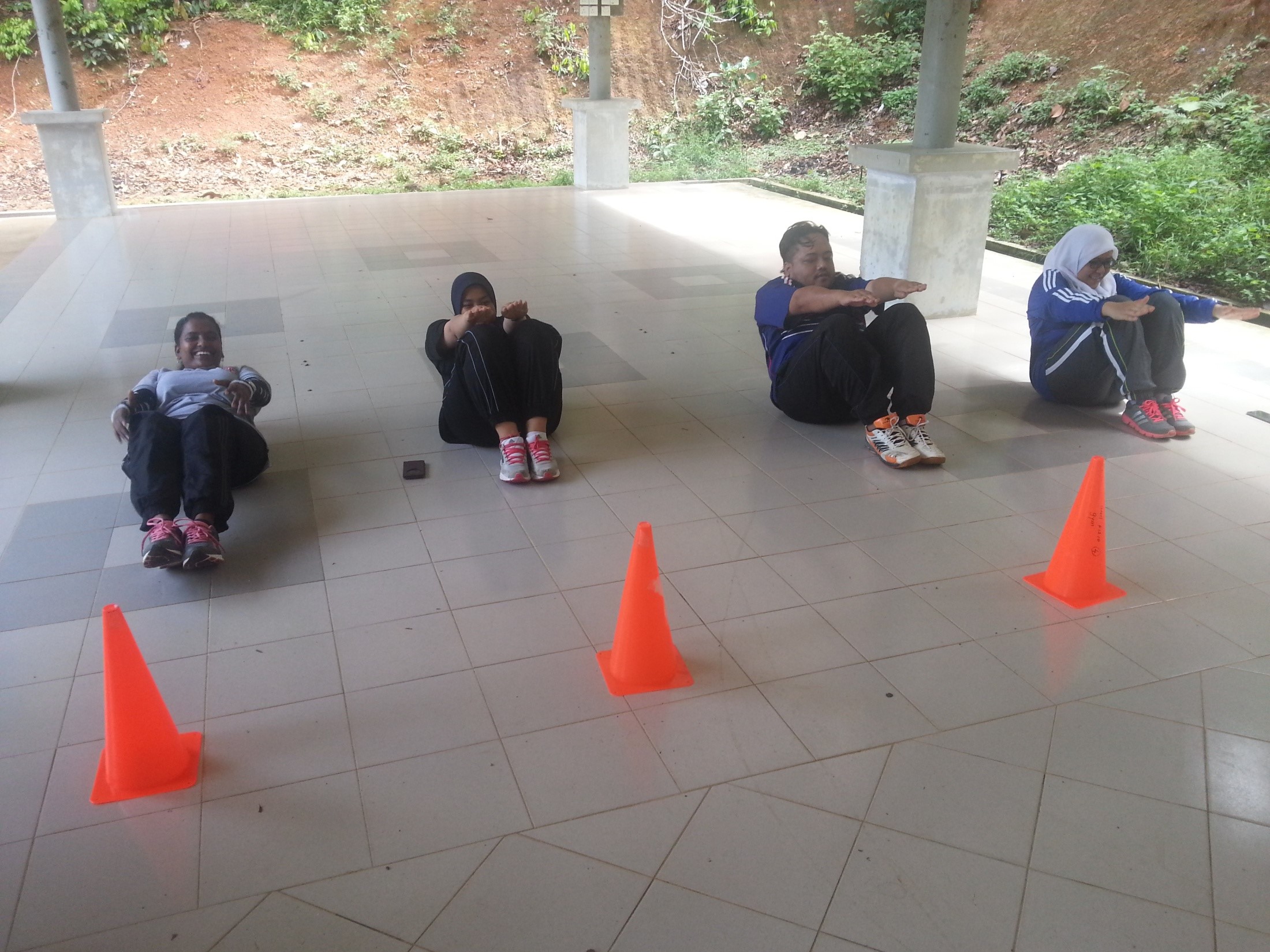What is obesity ?
Obesity is recognized as a major determinant of many other non-communicable diseases such as cancer and musculoskeletal diseases.
A national research concluded that 2 from 5 adult population are obese (Kajian Obesiti, 2012).
Are you obese?
Person with excessive body fat and body mass index (BMI) > 30 kg/m2 were labeled as obese.
Clinical Practice Guidelines on Management of Obesity (2004)
Body Mass Index (BMI) Formula
|
BMI |
= |
Weight (kg) |
|
Height x Height |
Prevalence of obesity
1.By age
Prevalence of obesity increased with ages. 4.4% obese and 16.6% overweight adults in Malaysia are aged > 18 years.
2. By ethnicity
Obesity was highest among the Malays and Indians, if compare to Chinese
3. By gender
Females have 1.27 times higher risk as compared to the males.
Second National Health and Morbidity Survey (Ministry of Health, 1996)
What are the risk factors that lead to OBESITY? What are their complications?
|
1 |
Changeable Factors |
|
Potential Complications |
|
|
||
|
2 |
Unchangable Factors |
||
|
What is the relation between energy expenditure and body weight?
When energy expenditure exceeds energy intake, a negative energy balance exists and body mass is reduced.
What is the relation between calorie and weight loss?
Each individual must burn almost 7000 kcal to reduce 1 kg of body weight.
What are the benefits of weight loss?
Moderate weight loss (10% to 15% of body weight) has been shown to decrease health risks and medical problems in 90% of obese patients.
How to reduce body weight?
There are 2 things we need to focus in aim to reduce our body weight which are:
- Perform the regular exercise
- Control daily diet
What is the definition of exercise?
Exercise is planned and structured movement within a period of time to maintain and improve physical fitness and health (American Physical Activities Association, 1978)
How exercise can increase Resting Metabolic Rate and decrease body weight?
- The addition of a high intensity, high volume resistance training program to a Very Low Calorie Diet can attenuate the loss of Lean Body Mass and increase Resting Metabolic Rate with a significant weight loss.
- Combining aerobic exercise and Very Low Calorie Diet resulted in a significant decrease in body weight.
(Randy W. Bryner, Irma H. et. al., 1998)
What exercises are effective to burn body fats and calories?
A variety of exercises are recommended to lose body weight. A Combination of aerobic type of exercise and resistance training is advisable.
- Traditional cardiovascular (aerobic exercise) and weight loss programs for adults often include activities such as walking, running, cycling, and swimming (Gormley SE, Swain DP, High R, et al., 2008). Adults can achieve improvements in cardio-respiratory status and BMI through participation in an Interactive Video Dance Game (IVDG) exercise program which is effective and more enjoyable (Anne Mejia-Downs, Stacie J., 2011). Picture 1
- Concurrent resistance and endurance training have beneficial effects on energy expenditure and weight loss. Whereas single-mode training, such as endurance or resistance training, has been shown extensively to increase aerobic capacity and muscular strength, respectively (Brett A., 1998). Picture 2
How to perform the aerobic type of exercise by FITT Formula?
|
|
Frequency | Perform 3-4 times per week |
|
|
Intensity | Maintain the intensity from low to moderate for throughout the exercise |
|
|
Time | Continuously done 45 to 60 minutes each session |
|
|
Technique | Alternately change various aerobic type of exercise as interest |
How to measure the aerobic exercise intensity by Karvonen Formula?
- Procedure 1: Feel and measure Resting Heart Rate
(is advice to measure Heart Rate before doing any activity)
2. Procedure 2: Calculate Maximum Heart Rate
Maximum Heart Rate = 220 – Age
3. Procedure 3: Calculate Heart Rate Reserve
Heart Rate Reserve = Maximum Heart Rate – Resting Heart Rate
4. Procedure 4: Measure range of Target Heart Rate
- 60% (Heart Rate Reserve x 60%) + Resting Heart Rate
- 70% (Heart Rate Reserve x 70%) + Resting Heart Rate
It is recommended that begin the exercise at 60 to 70% of Maximum Heart Rate and can be progressed later as individual tolerance. You are advised to keep measuring the Training Heart Rate during and after performing exercise and must maintain within those ranges for safety.
 |
|
| Swimming | Jungle tracking |
 |
 |
| Slow jog > Fast jog > Running (in door) | Cycling |
Picture 1: Aerobic exercises
Source: Program Trim & Fit, Hospital Melaka
 |
 |
| Alternate low & high intensity circuit training | Dynamic/Plyometric training |
 |
 |
| Multi-station strength training | Hiking |
Picture 2: Resistance training
Source: Program Trim & Fit, Hospital Melaka
Tips to maintain body weight
- Keep remembering the slogan of BE ACTIVE, MOVE MORE, FIGHT OBESITY. Here is the recommended amount of exercise/physical activity per day.
- The initial goal of weight loss therapy is to reduce body weight by approximately 10 percent from baseline.
- It is suggested that weight loss at the rate of 1 to 2 pound/week (calorie deficit of 500 to 1000 kcal/day) commonly occurs for up to 6 months.
- A reasonable time line for a 10 percent reduction in body weight is 6 months of therapy.
- Habitual changes should be encouraged such as taking the stairs instead of the elevator.
- Competitive sports such as soccer and volleyball can provide an enjoyable form of exercise for many, but care must be taken to avoid injury.
- Reducing sedentary time is another strategy to increase activity.
References
- Institute of Public Health, Ministry of Health, Kuala Lumpur (1996) Report of the Second National Health and Morbidity Survey
- Randy W. Bryner, Irma H.,Janine Sauers, David Donley, Guyton Hornsby, Maria Kolar & Rachel Yeater. Effects of Resistance vs Aerobic Training Combined with an 800 Calorie Liquid Diet on Lean Body Mass and Resting Metabolic Rate. Journal of American College of Nutrition. 1998;117–121.
- Gormley SE, Swain DP, High R, et al. Effect of intensity of aerobic training on VO2max. Med Sci Sports Exerc.2008;40:1336-1343. 24
- Anne Mejia-Downs, Stacie J. Fruth, Anne Clifford, Stephanie Hine, Jeremy Huckstep, Heidi Merkel, Hilary Wilkinson, Jason Yoder. A Preliminary Exploration of the Effects of a 6-week Interactive Video Dance Exercise Program in an Adult Population. Cardiorespiratory Physical Therapy Journal. 2011;22:5-11.
- Brett A., Dolezal & Jeffery A. Potteiger. Concurrent resistance and endurance training basal metabolic rate in non dieting individual.The American Physiology Society.1998:695-700
Source image
- (2015) Program Trim & Fit, Hospital Melaka. Retrieved October 30, 2015
| Last Reviewer | : | 23 August 2019 |
| Writer | : | Mohd Naqiuddin bin Johar |
| Accreditor | : | Se To Phui Lin |
| Reviewer | : | Halimah bt. Hashim |










